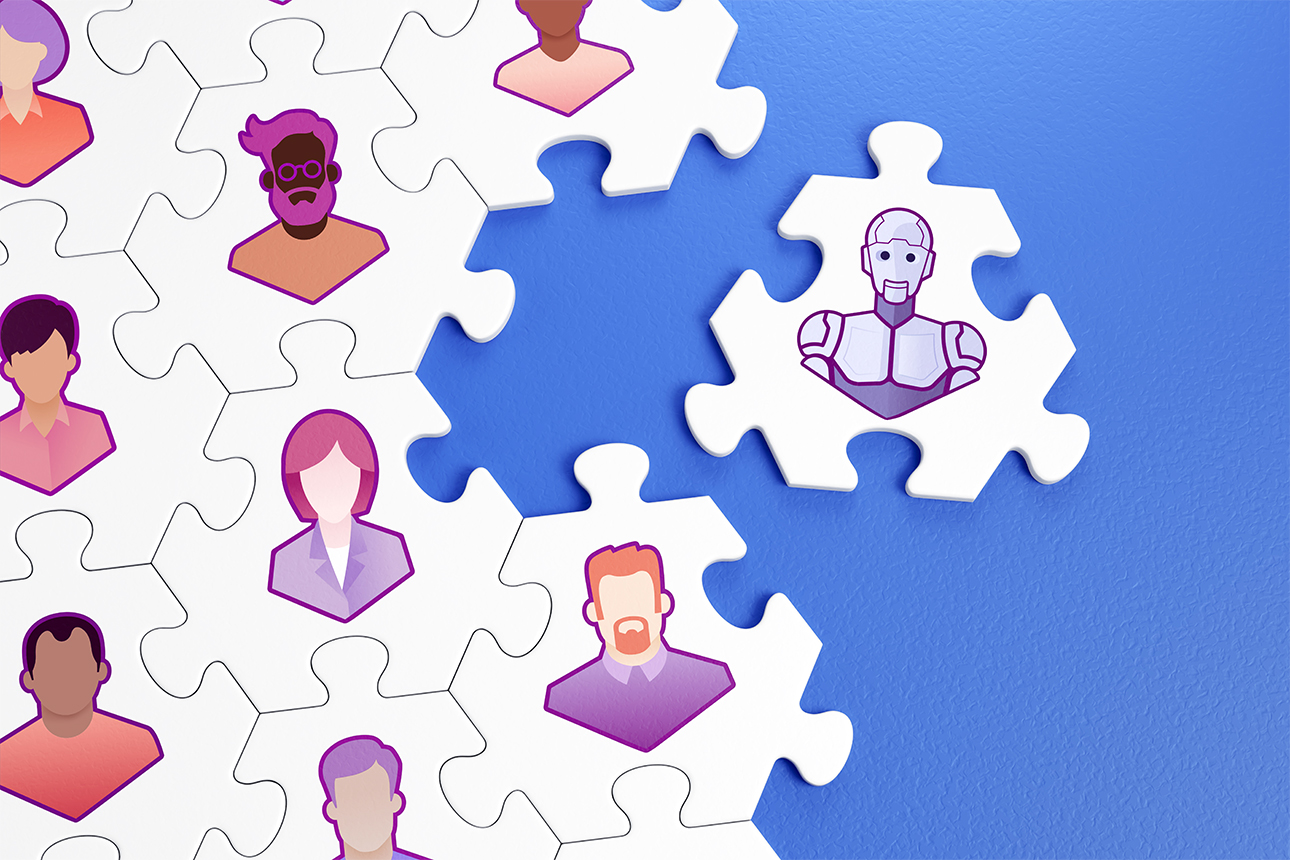Human Diversity Will Save Your Job From the Robot Takeover

Topics
Column

Robots have long been celebrated as ideally situated to take over society’s most dirty, dull, and dangerous jobs, from robot vacuum cleaners (dirty) to manufacturing robots (dull) to military robots (dangerous). All those roles, of course, were at one point held by people, and people in those functions will continue to be replaced by robots.
But they won’t be alone: Jobs that classically don’t fit into the “three D’s” work category — dirty, dull, and dangerous — are also being eyed as opportunities for robot workers. Many roles are being reimagined and redefined, with technology substituting for human power. They include positions in the rehabilitation field (with the use of wearable mechanical exoskeletons replacing the manual labor of physical therapists) and in the package delivery field (with the use of drones and self-driving cars replacing human drivers). These human-to-robot job transitions are leading many people to worry about their own jobs; thus, it comes as no surprise that there’s been quite a bit of discussion about how robotics and artificial intelligence will affect the future of work and the roles of even more humans.
Get Updates on Leading With AI and Data
Get monthly insights on how artificial intelligence impacts your organization and what it means for your company and customers.
Please enter a valid email address
Thank you for signing up
One way for companies to address concerns about job security in the age of robots is to expand the conversation about robotization from the three D’s to the four D’s — by talking about diversity.
What does diversity have to do with robotics and the future of work? Research has long shown that when humans and robots work collaboratively, they can complement each other’s talents, resulting in task improvements. While the first three D’s all provide reasons for robots to replace humans, the fourth D, diversity, provides the reason for humans to remain in many work processes.
Robots and AI will continue to redefine how and what type of work gets done, and higher cognitive tasks that once required skilled human expertise, whether financial accounting or basic programming, may be taken over by machines. But we humans — in all our diversity of experience, education, and insight — will still be able to specialize on those tasks that are uniquely defined by our own human capabilities.
Applying a DEI Model to Highlight Human Relevancy
Introducing diversity as a factor in establishing robot-human work interactions obviously evokes the concept of DEI (diversity, equity, and inclusion) that’s recently taken center stage in workplace human-relations issues. That’s not an accident: There are parallels in the value of diversity in both realms.
When organizations describe why diversity matters in the human relations context, even when it’s viewed purely from a business perspective, they usually discuss how different perspectives from a diverse group of people combined together result in better outcomes, better products, and better services. Why should it be any different with robotics?
The challenge for companies is to figure out how to best integrate human diversity into robotics in order to make human workers more relevant. To do so, organizations can take some guidance from the DEI experts:
Step 1: Do your DEI research. Where in your processes does the diverse human touch matter? You want to build priorities for integrating the potential benefits of robotics with the richness of human talents based on a rigorous assessment of the organization’s current state. Identify the special skills, intuitive understanding, and problem-solving capabilities that only your human employees have.
For example, troubleshooting a new technical problem during the initial beta release of a new product requires patience, creative thinking, and the ability to navigate the frustrations of the customer. Addressing that same technical problem after the nth complaint, albeit from a different customer, becomes fairly repetitive. At that point, don’t continue throwing human labor resources at a task that’s suitable for robot labor.
Step 2: Dig into your data. Diversity focuses on ensuring that the makeup of your workforce is representative of a wide collection of lived experiences. Look at what your different human employees are currently good at, what new skills they are striving to learn, and what outcomes they are seeking to achieve. Use what you know about how people and robots currently contribute to the mission of the job to consider how the work will get done in a collaborative fashion in the future. “Inclusion” in this sphere of the business is not about fitting people into the robot box based on their skills; rather, it’s about expanding the robot box to incorporate those human competencies.
Step 3: Set measurable targets. Define what success looks like, both in terms of human resources and job output. Just as most companies now report on their diversity measures with respect to their workforce talent while setting metrics to measure targeted growth, the same can be done when thinking about human diversity. What types and percentages of your jobs are human filled versus robot filled? Are your employees satisfied with their current roles in the company? What is your human attrition rate, and do certain job classes or demographics have higher churn than others? Most importantly, hold yourself accountable, especially by setting management incentives tied to equitable human inclusion during the robot invasion.
